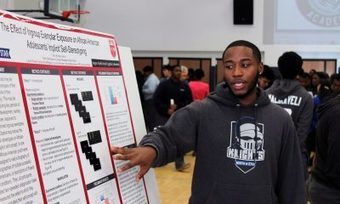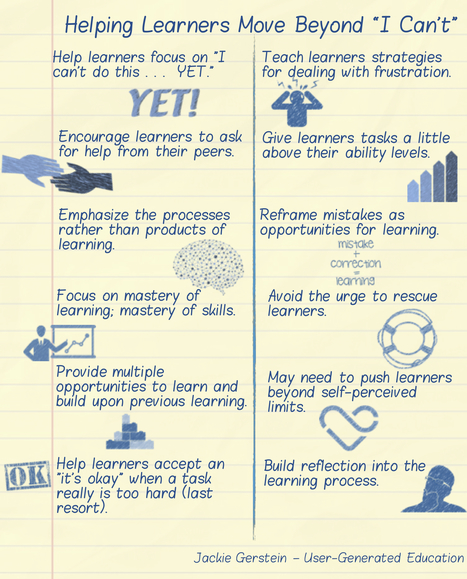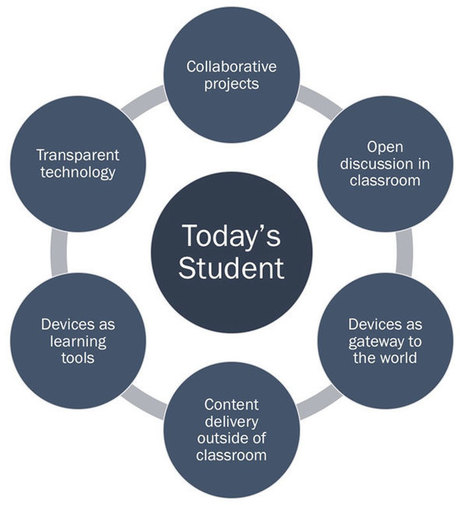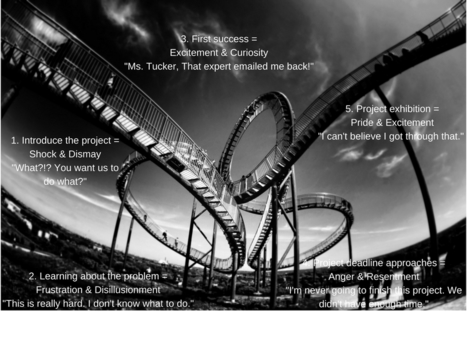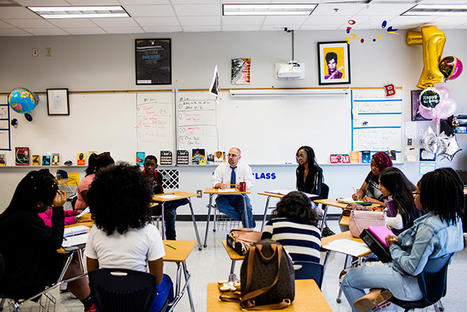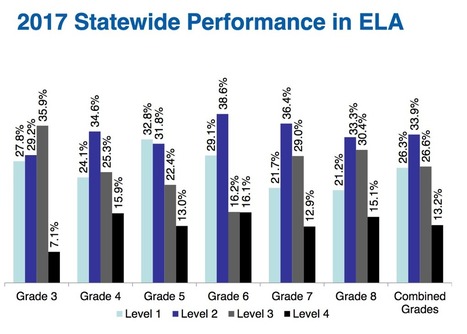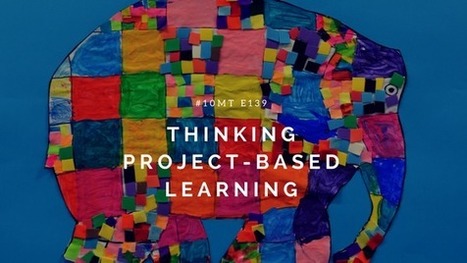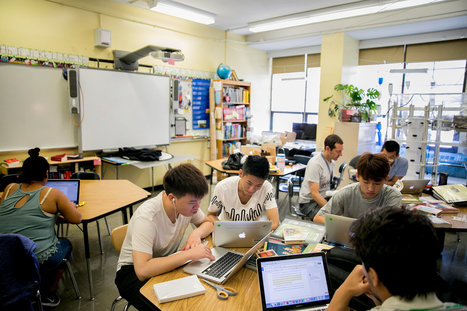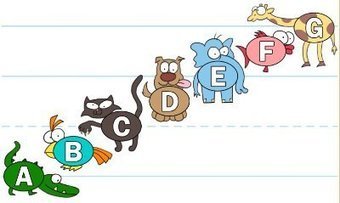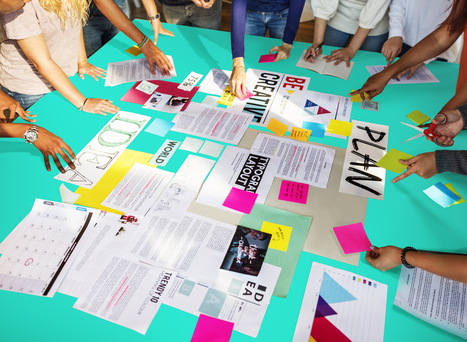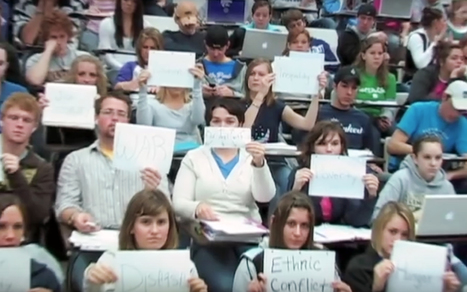Two Curtin Science and Engineering students spent six months working with NASA and share their insights with you!
Get Started for FREE
Sign up with Facebook Sign up with X
I don't have a Facebook or a X account

| Tags |
|---|
 Your new post is loading... Your new post is loading...
 Your new post is loading... Your new post is loading...
Weaving learning into a story makes learning more interesting, activates the brain’s positive emotional state, and hooks the information into a strong memory template. The memory then becomes more durable as the learning follows the narrative pattern through sequences connected to a theme, time flow, or actions directed toward solving a problem or reaching a known goal.
Kim Flintoff's insight:
Weaving learning into a story makes learning more interesting, activates the brain’s positive emotional state, and hooks the information into a strong memory template. The memory then becomes more durable as the learning follows the narrative pattern through sequences connected to a theme, time flow, or actions directed toward solving a problem or reaching a known goal.
Nik Peachey is back with the third post from his series on digital teaching skills, this time taking a look at ‘crowdsourcing’ and the online tools you can use to use for this.
Kim Flintoff's insight:
Crowdsourcing information is about doing the opposite. It’s about collecting information from the room and beyond and enabling our students to share what they already know and develop their knowledge together.
As a teacher, you put a lot of thought into how to make your class and the material as accessible and engaging as possible. You think about what you know, and how you first learned it. You think about what your students already know, and how to use that knowledge as the foundation for what you're about to teach. And, as if that's not enough, you think about how to make your content so engaging that no matter what else is happening (lunch next period, upcoming prom, or the latest social media scandal among the sophomores), your lesson will hold your students' attention. All that thought goes into a lesson, and still there are students spacing out during class or seeming to fall behind. Working so hard and still not reaching every student can be frustrating. And you have no one to blame but yourself -- you're hogging all the best learning in your classroom.
Kim Flintoff's insight:
Working so hard and still not reaching every student can be frustrating. And you have no one to blame but yourself -- you're hogging all the best learning in your classroom
y classroom is the one with lots of noise and activity from students.
Dive Brief:
I work part-time with elementary learners - with gifted learners during the school year and teaching maker education camps during the summer. The one thing almost all of them have in common is yelling out, "I can't do this" when the tasks aren't completed upon first attempts or get a little too difficult for them.…
The next generation learning experience should lean heavily on collaboration. I see a trend, especially in the sciences, that worries me. Many instructors discourage or even forbid students from collaborating with their classmates, considering it to be cheating. This puts enormous pressure on students. More importantly, this type of learning does not model what they will encounter in the work world, where they will be not discouraged but, rather, expected to collaborate. While I understand the necessity for independent work, there are other ways to achieve the goal of mastery while encouraging collaboration. Some instructors simply alternate assignments, requiring independent work with collaborative projects. Collaborative work can also be paired with lessons about ethics and plagiarism to help shape our students into responsible, ethical adults.
In this TedX Talk, Josh Kaufman asks his audience, “How long does it take from starting something and being grossly incompetent and knowing it to being reasonably good?”
Kim Flintoff's insight:
If you put 20 hours of focused deliberate practice into that thing, you will be astounded. Astounded at how good you are.
Schools are designed to be practical but this has a hidden drawback. Innovation is often impractical because it’s unpredictable. So, what if the push toward “practical skills” in school is actually making learning impractical? And what if impractical ideas and skills we ignore are actually what students will use later in life?
Kim Flintoff's insight:
Part of the reason I switched from offering "workshops" to PLAYSHOPS about 20 years ago...
One of the most challenging aspects of this school year has been using project-based learning to integrate curriculum. Projects are a beast! It feels like I am boarding a roller coaster each time we begin a new project. In fact, it feels like every project follows the same emotionally turbulent trajectory as pictured below.
“Self-directed learning” is a major catch-phrase of 21st Century educationalists, and undeniably a critical skill in the labor markets of the future. The modern world of work demands that people have demonstrable abilities to self-manage: their time and their inputs. Employees that can be tasked to solve a problem without micro-management, and can be relied upon to use their resources responsibly and sparingly, are highly prized.
“When you’re just pretending and reading Madame Bovary because everyone else reads it . . . Who cares! That’s SO boring. Ooh, and now we’re reading Hamlet. And this is the place where we get to talk about Polonius. Stale. It’s absolutely stale. And no real learning will take place in an environment like that.” |
Highlights Of The Personalized eLearning Approach
To borrow Smizik’s words, standardized testing does not invest in teacher’s professional capacities. The craft of teaching is lost to the demands of helping students meet the test requirements. The loss of dynamic pedagogy is appalling. The use of modules and worksheets to discuss novels lacks creativity and leads to student disinterest. The disregard for the mastery of multiplication facts causes students to lack fluency in mathematics. (These are just two examples — teachers in every grade level can offer more.) New York and other states can change the name of the standards, but it does not change the outcome: students are overly tested using developmentally inappropriate standards with substandard outcomes.
Kim Flintoff's insight:
To borrow Smizik’s words, standardized testing does not invest in teacher’s professional capacities. The craft of teaching is lost to the demands of helping students meet the test requirements. The loss of dynamic pedagogy is appalling. The use of modules and worksheets to discuss novels lacks creativity and leads to student disinterest. The disregard for the mastery of multiplication facts causes students to lack fluency in mathematics. (These are just two examples — teachers in every grade level can offer more.) New York and other states can change the name of the standards, but it does not change the outcome: students are overly tested using developmentally inappropriate standards with substandard outcomes.
Today Rody Boonchouy @rodyboo from the Buck Institute talks about effective project based learning. With a powerful metaphor explaining the difference between projects and project based learning, Rody sets the stage to discuss PBL trends and tips. Let’s dive deeper into PBL.
Informing and feeding that vision should be deep knowledge—ideally research findings about how students learn, what shapes their readiness to learn and how those principles can be applied in tools to support learning. Digital Promise has devoted significant resources to showing the links between what we know—and how it gets implemented in school. For instance, the organization’s research map connects topics such as student motivation to published research frameworks and results.
Mastery-based learning allows students to learn at their own pace.
Kim Flintoff's insight:
Still largely a content driven model... what changes are necessary to the Mastery model to make it more relevant to the 21st Century and beyond?
The roots of student interest are described in the KQED web site article, “How the Power of Interest Drives Learning”:
Kim Flintoff's insight:
The first point implies that capturing and maintaining interest are vital to success, and that interest is perhaps the great leveler, as opposed to students’ existing assets. Educators need to get this right. The second point provides plausible explanations for why we’re still challenged on the engagement front these days, in spite of the new tools.
Project-based learning (PBL) is a trend that’s spreading faster than a wildfire during a drought. Why? Because research on PBL proves that it increases student engagement and achievement, and helps students develop the 21st-century skills they need to succeed in their future careers.
Summary: Situated Learning Theory posits that learning is unintentional and situated within authentic activity, context, and culture.
Kim Flintoff's insight:
Summary: Situated Learning Theory posits that learning is unintentional and situated within authentic activity, context, and culture.
The really big issues facing us as a society have proved to be somehow marginal to our key concerns with university curriculums. The big challenges of our times are not central to our learning. Peter Hymen in his recent report Engaging with Others has observed that we have a one dimensional higher education system in a multidimensional world; that we are living in an age of big challenges, big data, big dilemmas, big crises and big opportunities; yet universities too often are small in ambition, small in their values proposition, and small in their scope.
Kim Flintoff's insight:
"If we can offer our students an engaged curriculum that will equip them with the knowledge, passion and skills for an improved social result then we will see the signs of a new culture beginning to emerge, one that has real impact on the big issues facing engaged universities, such as action on poverty, the marginalisation of young people, the need for democratic engagement and the impact of new technologies"
At a recent academic conference, I attended a plenary session on active learning. While spouting the virtues of student engagement, the presenter seemed to be admonishing cellphone use in class, labeling it as a sign of distracted and bored learners.
Kim Flintoff's insight:
Researchers in Michigan show that project-based learning in high-poverty communities can produce statistically significant gains in social studies and informational reading.
Michael Wesch’s YouTube videos gave me the courage — and the ideas — to turn more and more of the responsibility for not just learning, but teaching, over to my students. Like most great educators, Wesch, associate professor of cultural anthropology at Kansas State University, is a great communicator. Fortunately for us, he is also a YouTube genius, so you don’t have to take my word for it — watch and hear him directly. Most of us first learned of him when his “The Machine is Us/ing Us” went viral 10 years ago, with more than 11 million views — a look at how the Web and hypertext were changing not just our ways of communicating, but our ways of thinking, as well. He also raised an issue that has come to the forefront most recently — as we use the Web, we are teaching it how to change us more effectively. He says he never intended to make a viral video, it was originally meant for his digital ethnography class. |







